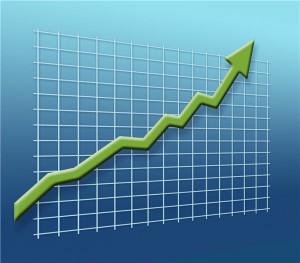16 Nov Dividend Reinvestment & Compound Interest
Their combined power must be recognized & appreciated.
Why reroute dividends back into your investments? Isn’t taking the income the preferred outcome when a dividend is produced?
Retirees and pre-retirees are eager for dividend income in this era of historically low interest rates. Even so, the choice to buy more shares has merit for the long run.
Reinvestment & compounding may have profoundly positive effects. As a hypothetical example, let’s say you own 100 shares of a stock with a $10 share price. For the sake of mathematical convenience, let’s say that this stock maintains that share price while providing you with a 3% annual dividend. That 3% payment breaks down to a 0.75% quarterly dividend ($7.50 per quarter going to you). You choose to reinvest these payouts, buying more shares each quarter. So after one quarter, you own 100.75 shares of that stock (valued at $1,007.50), and a year later, you own 103.034 shares (valued at $1,030.34). Your annual yield effectively improved from 3% to 3.34%.1
That’s after one year. The big picture, even with such a simple example, is easily grasped here. While past performance is no indicator of future results, some recent stock market history illuminates the power of dividend reinvestment and compounding further.
Bears reference the “lost decade” of the 2000s, but dividend trends from that era certainly put stock market investing in a more positive light. Even with the 2000-02 bear market and 2008 downturn, S&P 500 firms increased their dividends by an average of 5.46% in a 10-year stretch that witnessed both those market setbacks. In the same ten-year period, DJIA companies boosted their dividends by an average of 7.07% per year, while NASDAQ firms bumped up theirs by an annual average of 45.38%! If an investor put $100,000 into a hypothetical investment that performed similarly to the DJIA on January 1, 2000, simple price appreciation would have taken its value north to more than $105,000 by January 1, 2012. Yet across the same 12 market years, that hypothetical $100,000 invested with dividends would have grown to approximately $141,000 by the start of 2012.2
Over 80% of S&P 500 firms pay dividends. In September 2013, 83% of stocks in the index were issuing dividend payments – the most in 15 years – with dividends from 99 firms at 3% or better. Some firms paid them out even as they lost money.3,4
Think about DRIPs. About 1,000 publicly traded firms offer dividend reinvestment plans (DRIPs), and you can get into them for the price of a single share. DRIPs let you buy partial shares using your reinvested dividends – often without a fee. (You can also open a DRIP using a broker, but commissions and transfer charges may apply.) This is really another form of dollar cost averaging – slow and steady investment with the potential for a considerable long-term benefit. Multiple DRIPs mean multiple 1099s and some shareholders lose track of DRIPs over time, but they offer you a nice way to broaden your portfolio.5
Do you work for a big company that offers a DRIP? While you expose your portfolio to too much risk by assigning too much of it to one company’s stock, the reinvestment and compounding potential of a no-fee DRIP certainly warrants your attention.
Here is another hypothetical example. Say you go to work for the Rewarding Corporation and you invest an initial $1,000 in its employee DRIP, buying 100 shares at that price. You make $100 monthly contributions to the drip for the next 20 years while the shares appreciate 5% annually over that period and the dividend yield averages 2.3%. (We’ll factor in unchanging capital gains tax rates of 15% as well.) Twenty years later, your investment grows to $52,790.80. If your consistent monthly contribution to the DRIP is $250 rather than $100, you end up with $126,221.11 under the same conditions.6
Keep investing consistently, with compounding & reinvestment in mind. It may make a huge financial difference for you over time – a difference that might even let you retire earlier instead of later.
Kevin M. Nast is a Financial Advisor and the President of NastGroup Financial in Northville, MI 48167. He may be reached at nastgroupfinancial.com or 248.347.1888. Kevin also services clients in Bloomfield Hills, Plymouth, Canton, Novi, South Lyon and the surrounding metro Detroit area as well as 13 additional states across the US.
This material was prepared by MarketingLibrary.Net Inc., and does not necessarily represent the views of the presenting party, nor their affiliates. All information is believed to be from reliable sources; however we make no representation as to its completeness or accuracy. Please note – investing involves risk, and past performance is no guarantee of future results. The publisher is not engaged in rendering legal, accounting or other professional services. If assistance is needed, the reader is advised to engage the services of a competent professional. This information should not be construed as investment, tax or legal advice and may not be relied on for the purpose of avoiding any Federal tax penalty. This is neither a solicitation nor recommendation to purchase or sell any investment or insurance product or service, and should not be relied upon as such. All indices are unmanaged and are not illustrative of any particular investment.
Citations.
1 – beta.fool.com [9/2/13]
2 – tinyurl.com [3/26/13]
3 – factset.com [9/16/13]
4 – 247wallst.com [10/2/13]
5 – consumerreports.org [10/11]
6 – hughchou.org [10/17/13]





No Comments